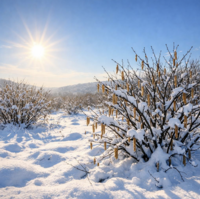Pollen information for Tyrol from 4 January 2026
Happy new year!
We wish you and your families a healthy, peaceful and successful 2026.
There is currently no allergy-related risk from pollen in the air in Tyrol. The start of the pollen season is expected towards the end of January, with the first pollen from hazel and alder. As soon as the pollen season starts, we will inform you weekly about the allergenic load in the region.
Until then, we wish you a very good start to the new year and all the best for the coming months.
Yours sincerely,
Your pollen monitoring team.
Responsible for the content
Universität Innsbruck
Institut für Botanik
Dr. Laurent Marquer
Mittelfristige Prognose basierend auf Modelldaten und Pollenzählungen.
Auszugweiser oder vollständiger Nachdruck und Veröffentlichung nur unter Angabe der Quelle gestattet.
Wetterdaten und Prognosen basierend auf synoptischen Daten:
GeoSphere Austria, Bundesanstalt für Geologie, Geophysik, Klimatologie und Meteorologie (ehemals ZAMG).
zum Team


